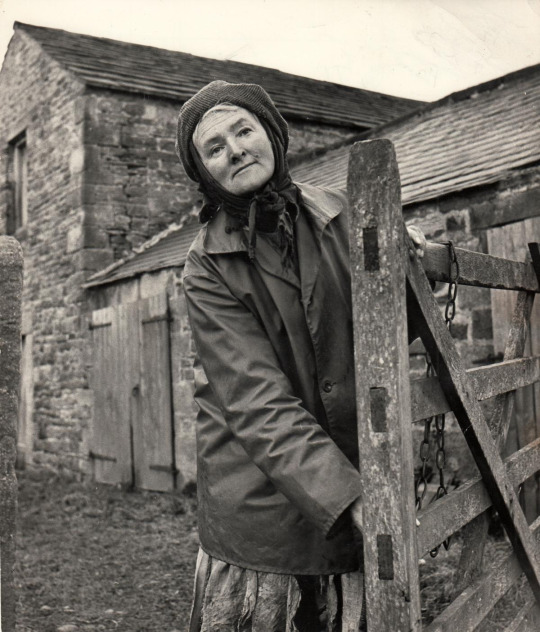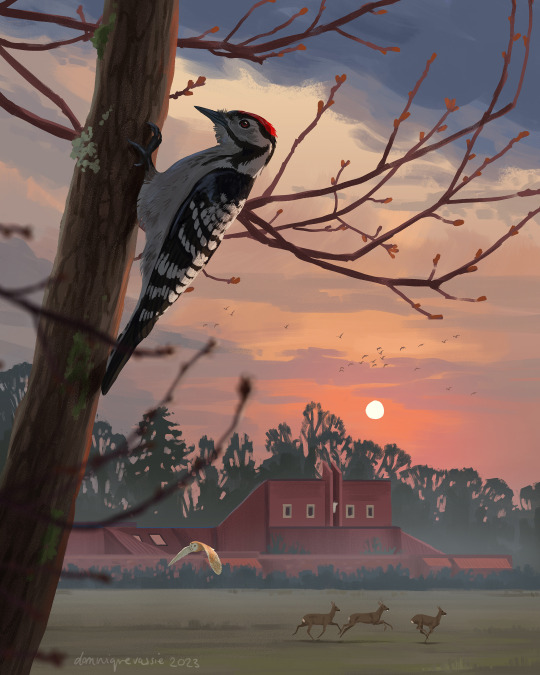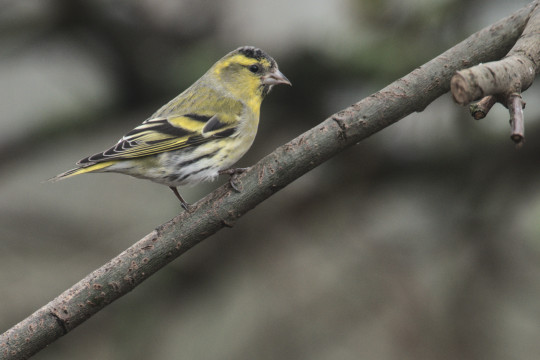#yorkshire wildlife trust
Text

Gouache painting of long-tailed tits for the upcoming book about my local nature reserve.
Long-tailed tits make stretchy nests from a base of moss and spider silk. On the outside they’re covered in lichen for camouflage and inside are lined with feathers for cosiness!
#animal art#artists on tumblr#art#traditional art#gouache#long-tailed tit#bird art#bird#nest#british wildlife#yorkshire wildlife trust#natural england#yorkshire#painting
2K notes
·
View notes
Photo

A note of whiteness in the sky
The title is a misquote of "The Little Egret - A Note Of Whiteness On The Water" by Federico "Fred" Fiorillo; 01.12.2020
#little egret#egret#birds#birds in flight#birds on tumblr#nature#nature photography#nature addict#wildlife#yorkshire wildlife trust#ywt#north cave wetlands#black and white#black and white photography#monochrome#bnw#bnw photography#bw#bw photography#bnw nature#original photograph#original content#original work#all my own work#photographers on tumblr
206 notes
·
View notes
Text
Amazing Graze: Summer Solstice Charity Donation 2022 ☀️
Amazing Graze: Summer Solstice Charity Donation 2022 ☀️
Thank You to everybody who voted in our Solstice charity donation poll. The poll is now closed and we are pleased to say that Yorkshire Wildlife Trust will receive £500 from our book sales profits towards their grassland appeal.
You can support more Wildlife Trusts projects by buying our folk horror and urban wyrd books at –
https://www.lulu.com/spotlight/andypaciorek
and/or donating directly…

View On WordPress
#amazing Graze#art#Blog#books#charity#charity donations#Folk Horror#Folk Horror Revival#the wildlife trusts#Wyrd Harvest Press#yorkshire wildlife trust
12 notes
·
View notes
Video
Moorlands Nature Reserve, York by Allan Harris
#Azalea luteum#Moorlands Nature Reserve#Yorkshire Wildlife Trust#England#Moorlands#North Yorkshire#Wigginton#York#azalea
2 notes
·
View notes
Text
hannah hauxwell — the farmer who lived a humble life in the unforgiving high pennines, who found her purpose in living amongst the unfertilised grasses and the sheeps and cows, who asked for nought but appreciated every moment — passed away today, january 30th, six years ago. she embodied the spirit of the dales and was one of england's most beautiful examples of living not on the land but with it. despite the intense solitude she faced living alone for decades with no running water or electricity, neighbours miles away, unbearable cold and ever declining health, making due on a couple hundred pounds a year for most of her life, she never looked at her home or her circumstances with a moment's bitterness. in fact, when she was 60 years old and accepting the reality her fragility, she said, with tears in her eyes,
The time will come, perhaps pretty near. But it is a proper...a big upheaval, emotionally, physically, mentally. It's just as if my world was falling to pieces. Everything I've known and I'm sure of. Security, everything. I don't know how I'll leave here. Or how I'll feel after I have left. It's my world and its lovely, lovely scenes. The moonlight on the water. I think it's one of the loveliest things. I stood and watched sometimes even when I was tired. In the wintertime — I don't like the winter — it's marvellous. I'm very lucky to live in such a lovely place. [...] The beauty, to me, there's nowhere like it, never will be. And whatever I am, wherever I am, this is me. This is my life. And if there's a funny old person in years to come, a ghost walking up and down here, it'll be me. A big part of me, wherever I am, will be left here. That's me. There's nowhere else. There's nowhere like it.

i implore anyone and everyone to watch the documentaries about her modest life, and her wide-eyedness and gentleness and informed wisdoms:
too long a winter (1973) — the yorkshire television production that began it all, following hannah's daily life during a brutal winter
hannah goes to town (1977) — at the age of 51, hannah takes her first ever trip to london to accept 'woman of the year' at a charity luncheon
a winter too many (1989) — over 15 years since the first documentary, the same film crew revisits hannah and her farm, where some things have changed but most are just the same
hannah hauxwell: innocent abroad (1992) and hannah: usa (1993) — hannah, who is finally retired from farming life, travels the world
she collaborated on multiple books about her life, all of which i recommend, starting with daughter of the dales.
because hannah's farming techniques were completely traditional, void of re-seeding and fertilisers, the fields around her farm maintained a rare, rich floral composition. now considered a site of special scientific interest, they are aptly named hannah's meadows and are operated by a local wildlife trust. i believe she still walks those hills today. rest in peace, hannah ❤️

image
69 notes
·
View notes
Text

The writer-activist Wendy Mitchell, who has died aged 68, won hearts and minds by advocating for living positively with dementia. She was determined to remind people that those living with the disease are not “sufferers” and that there is “a beginning, a middle and an end to the disease – with so much life to be lived in between”. She held strong beliefs that people should have the right to choose their own death, and campaigned for assisted dying laws in Britain – one of the subjects of her final book.
Wendy wrote three bestsellers, Somebody I Used to Know (2018), What I Wish People Knew About Dementia (2022) and One Last Thing: How to Live with the End in Mind (2023) – I was fortunate enough to be her ghostwriter on all of them. They were translated into dozens of languages, and her advocacy work won her honorary doctorates from Bradford and Hull Universities, and a British Empire Medal last year.
When I met Wendy in 2016, she was writing a daily blog, Which Me Am I Today? ,which she had started simply to document her day-to-day life, though it soon had tens of thousands of followers. After her diagnosis of young-onset vascular dementia and Alzheimer’s disease in July 2014, Wendy was shocked at the lack of information and support available to those newly diagnosed.
In Somebody I Used to Know, she wrote about her own depression at the diagnosis, until she realised: “I was still the same person I had been the day before my diagnosis.” She threw herself into academic and medical research, speaking to doctors, nurses and other professionals. What I Wish People Knew About Dementia chronicled how the disease affects different parts of daily life, aside from memory, including taste, smell, hearing, gait and vision.
Her tips, such as draping a scarf over a flat-screen television to avoid it looking like a hole in the wall, or sticking photographs of clothes on wardrobe doors as a reminder of what is inside, made all the difference to those who were newly diagnosed.
Wendy enjoyed finding ways to outwit dementia. As she wrote in her final blog post: “Yes, dementia is a bummer, but oh what a life I’ve had playing games with this adversary of mine to try and stay one step ahead.”
Born in Wakefield, West Yorkshire, to Violet and Ken Draper, Wendy described growing up in their pub in her first memoir. She went to school in Pontefract and was a keen sportswoman, excelling at tennis and running – after her diagnosis, she swapped running for fell-walking in the Lake District. She described the Lakes as her “paradise” and Friars Crag as her favourite place to sit.
Wendy raised her two daughters, Sarah and Gemma, alone after her divorce from their father in the early 1980s (although she continued to use her married name). For many years she earned her living as a cleaner, until she started working in administrative roles within the NHS, gaining promotion to become a non-clinical team leader. Eventually she was forced to retire from her job as a rota manager at Leeds general infirmary, and later campaigned for workplaces to support those newly diagnosed with dementia to continue working: “We don’t lose all our skills overnight just because of our diagnosis,” she said.
In early retirement Wendy discovered other skills, including writing, and enjoyed her “trundles” around the village of Walkington, in the East Riding of Yorkshire, where she lived, capturing local wildlife with her trusted Nikon camera. She revelled in the fact that villagers unaware at first of her diagnosis described her as “the lady with the camera”.
She met many dementia advocates, and was inspired to take up campaigning when she heard Agnes Houston talk at a women and dementia event in York. Wendy became a guiding light to others, a regular contributor at Innovations in Dementia and York Minds and Voices, part of the DEEP UK Network of Dementia Voices.
She gathered her own formidable team of friends living with dementia, who produced video content chatting about the issues they encountered and nicknamed themselves “the Four Amigos”. She advised on the BBC TV series Casualty and the movie Still Alice (2014), and received a mention from the Hollywood actor Julianne Moore in her Bafta acceptance speech.
Wendy raised tens of thousands of pounds for Dementia UK with her annual “wacky challenges”, as she called them, daredevil stunts that included walking across hot coals, skydiving, wingwalking and, last autumn, a swim in Derwentwater after she was forced to abandon her abseil down the Leadenhall building in London (the “Cheesegrater”) due to technical issues (theirs, not hers). She insisted that she was fearless after her diagnosis, having already faced the worst.
Wendy was a force of nature, but dementia made her life harder and harder. She ended her life by voluntarily stopping eating and drinking (VSED), a subject she discussed in One Last Thing. In her last blog post, written in advance, in which she announced her death, she said: “Adapting to this life with dementia is over, but I don’t consider dementia has won, as that would be negative … it’s me calling time on my dementia – checkmate – before it plays its final move.”
She also pleaded for people to campaign for assisted dying laws in her memory.
Reviewing Somebody I Used To Know for the Sunday Times in 2018, Jackie Annesley wrote: “The world could do with more Wendys.” I couldn’t agree more, but there was only one wonderful Wendy, taking people by the hand and showing them how to live a good life with the disease in tow, or indeed how to talk about the end of life so they can instead focus on living.
Wendy is survived by her daughters.
🔔 Wendy Patricia Mitchell, writer and campaigner, born 31 January 1956; died 22 February 2024
Daily inspiration. Discover more photos at Just for Books…?
5 notes
·
View notes
Text
An oak tree that is said to have inspired the Chronicles of Narnia is among those nominated for the Woodland Trust’s tree of the year competition.

The Kilbroney oak in Kilbroney Park, Rostrevor, County Down, is thought to be more than 300 years old.
An oak tree that is said to have inspired the Chronicles of Narnia is among those nominated for the Woodland Trust’s tree of the year competition.
The Kilbroney oak is located in Kilbroney Park, Northern Ireland, where CS Lewis holidayed as a child, later describing it as his vision of Narnia.
This mighty oak is on a shortlist of 12, which has been decided by tree experts from the Woodland Trust as well as members of the public. These trees have now been recorded for posterity on the charity’s ancient tree inventory (ATI).
Volunteers nominated hundreds of examples on their walks around the UK, sending images and information about the contenders to the trust.
While getting the public to vote for a favourite tree may seem like a bit of fun, the trust says the competition, which is now in its eighth year, is important because it highlights rare ancient and veteran trees, their role in fighting the climate crisis and biodiversity loss in the UK, and why protecting them is vital for the future of the planet.
Tom Reed, citizen science officer for the ATI and a judge in the competition, said: “The enthusiasm for ancient and veteran trees and the growing number of records being submitted to the ATI in the past couple of years showed just how much people love and value their trees.
“We selected the trees based on their size and significance for their species and also looked for trees steeped in history as well as trees that had high ecological, aesthetic or cultural value. It’s over to the public to pick a favourite from that impressive list.”
It is important to record ancient trees when they are found, as we do not know how many there are. A study by the University of Nottingham said there could be 1.7m to 2.1m ancient and veteran trees in England, of which only 115,000 are on record. Most of these are unlikely to be protected by policy or legislation, so it is impossible to know how many are at risk.
Adam Cormack, the Woodland Trust’s head of campaigning, said: “These trees have significant value. Yet very few have legal protection, which currently only comes in very specific circumstances, like if a tree happens to be located in a protected wildlife site. It’s protection by proxy rather than proper protected heritage status. After all, some of these trees are more than a thousand years old.
“We believe that now is the time to give these living legends the legal status they deserve. We all want to be able help to protect these wonderful old trees for centuries to come.”
Last year’s winner was the Kippford leaning tree, a hawthorn on the west coast of Scotland.
Voting via the Woodland Trust website closes at noon on 31 October. The winner will be announced on 4 November and will go on to represent the UK at the European tree of the year 2023.
The shortlist

1 The Escley oak, Herefordshire
It is not on any public records but for the past two yearsit has been one of the largest and oldest oaks on the ATI.
Location Along a public footpath north of Shobdon barn, Michaelchurch Escley.
Age Likely to be at least 400 to 500 years old.
2 The Flitton oak, Devon
This spectacular ancient oak splays out with eight enormous limbs dripping with moss and lichen – a haven for many species.
Location Set in a triangular copse of trees where three roads intersect in North Molton, near Flitton Oak Barns.
Age Estimated to be more than 700 years old.
3 Holly on the Hill, Hawnby, North Yorkshire
Unusually, this striking holly has a broad rounded crown, a clue that its canopy may have been harvested for many years.
Location Along a field boundary next to a public right of way that was an old bridle road on a first edition of the Ordnance Survey map (1860-1890).
Age Holly trees can live for 300 years. But while there is no certain lifespan for this specimen, its history suggests it could have been around since the late 19th century.
4 The Burnbanks oak, Haweswater, Cumbria
The tree’s form suggests it could be an old, coppiced tree that was managed for harvesting timber, or the remnant of an oak that has regrown after collapsing in the past.
Location A pocket of ancient woodland near Burnbanks, Haweswater.
Age Sessile oaks can live for more than 1,000 years
5 Hedgerow hawthorn, Colton, Cumbria
This stunning, twisted tree forms part of a small line of hawthorn trees that mark the site of a former land boundary.
Location: The tree in an open field on the edge of the Grizedale forest, north-east of Satterthwaite.
Age The land boundary is visible on a first edition OS map, so the tree likely to be between 170 and 200 years old.

6 The 12 Apostles lime, Chipping Campden, Gloucestershire
This is the largest of an avenue of 12 limes planted at St James churchyard to represent one of the 12 apostles. Historical sources suggest the original avenue may have been planted around 1770. Some of the original trees have been replaced, including five in 1929.
Location South-eastern path leading up to the churchyard in Chipping Campden.
Age Believed to be more than 250 years old.
7 Kilbroney oak, Kilbroney Park, County Down, Northern Ireland
The natural landscape of the Kilbroney estate is believed to have been the inspiration for the fantasy world in the Chronicles of Narnia.
Location Kilbroney Park, Rostrevor.
Age More than 300 years old.
8 The Portal tree, Loanhead, Midlothian, Scotland
This striking rowan has bent over to form a full archway that now has growth sprouting from its top. Rowans feature heavily in folklore, but it is not known if this tree was deliberately trained into this shape or formed naturally.
Location Publicly accessible, it is located within the wider grounds of the ruined Mavisbank House.
Age: Estimated to have been planted between 1850 and 1880.
9 The Rolls of Monmouth oak, Monmouthshire, Wales
The largest tree on the Great Oaks golf course in the Rolls of Monmouth estate.
Location: Rolls of Monmouth, Monmouthshire.
Age Likely to be more than 500 years old.
10 Langley Park chestnut, Angus, Scotland
A sweet chestnut tree within the grounds of a Georgian mansion.

Location Langley Park house, Montrose Basin, Angus.
Age Unknown, but it is almost certainly as old, if not much older, than the original 18th century house.
11 Layering horse chestnut, Kedleston, Derbyshire
This magnificent tree has obviously suffered from trauma in the past, its trunk stands hollow and decaying while the branches have fallen to its sides. Despite this, the tree has survived.
Location Kedleston Hall, Derbyshire.
Age The exact age is not known but horse chestnuts can live for up to 300 years.
12 Waverley Abbey yew, Farnham, Surrey
A spectacular yew, with roots that grow into and around the ruins of the very first monastery to founded in Britain 900 years ago by the Cistercian order.
Location: Within the ruins of Waverley Abbey.
Age: The exact age is not known but it cannot be more than 480 years old.
4 notes
·
View notes
Text
please keep your pet on the lead during the nesting season
New Post has been published on https://petn.ws/GuukR
please keep your pet on the lead during the nesting season
Ground-nesting birds like the Nightjar are particularly vulnerable to dogs. Picture: David Tipling Yorkshire Wildlife Trust and Dogs Trust are encouraging owners to keep their pooches on leads during nesting season from now until August. Visits to nature reserves, woodland and the wider countryside are relished in spring but it’s a busy time for our […]
See full article at https://petn.ws/GuukR
#PetCharitiesNews
0 notes
Text
15 QUESTIONS FOR 15 FRIENDS
tagged by @edsrosetattoo & @jessystardust, thank you pals!! <3
Are you named after anyone?
my two middle names are borrowed! one from my dad, the other from one of my favourite characters in a queer historical fiction novel
When was the last time you cried?
last week maybe? idk
Do you have kids?
nah
What sports do you play/have you played?
no thank you
Do you use sarcasm?
nah not really
What is the first thing you notice about people?
if they're judgemental, rude, cold, etc. also just bad or off vibes y'know? usually trust my gut around folks
What’s your eye colour?
blue-grey
Scary movies or happy endings?
both
Any talents?
pretty decent artist and writer
Where were you born?
yorkshire
What are your hobbies?
reading, art, birdwatching, collecting things like records and 19th century postcards, video games, travel and nature trips
Do you have any pets?
my rescure girl! she's a staffy and she's my best friend
How tall are you?
5'3 #shortking
Favourite subject in school?
english
Dream job?
don't dream of labour etc etc but if i could magically do anything and have the knowledge to do it, then anything to do with wildlife preservation OR space exploration and astronomy. fuck yeah
anyone who wants to do this, feel free!
1 note
·
View note
Text
Kick The Dust
Lanchin, S. (2019). What is Kick the Dust? | The National Lottery Heritage Fund [online]. Available from: https://www.heritagefund.org.uk/blogs/what-kick-dust [Accessed 2 March 2024].
In 2016 The National Lottery Heritage Fund launched a £10million investment to make heritage relevant to the lives of young people aged 11-25.
We had already invested in work with young people and heritage for a number of years. However, our research found that young people were still under-represented as audiences, participants and volunteers at heritage sites and services.
The result was Kick The Dust - a programme named by young people. Since 2016, it has invested in 12 large-scale projects across the UK. Grants of £500,000 to £1m were awarded by a team of 15 young people called the #DustKickers who were part of the decision-making process.
There are currently 12 running projects:
Don’t Settle, BeatFreeks – Birmingham and Black Country
Don’t Settle empowers young people of colour to tell, through art and curation, the stories of communities that have been neglected in heritage. It works with institutions that represent history in Birmingham and the Black Country.
Our Shared Cultural Heritage, British Council – Glasgow and Manchester
The British Council's Our Shared Cultural Heritage project gives young people from around the UK the chance to come together to explore the shared cultural heritage of the UK and South Asia and develop new methods for museums to engage with people.
Keeping it Wild, London Wildlife Trust – London
Keeping it Wild empowers and inspires young people from backgrounds currently under-represented in natural heritage to gain vital skills while discovering, conserving and sharing their experiences of the capital’s wild spaces.
Ignite, IVE – Yorkshire
Ignite Yorkshire works with young people to take inspiration from the industrial past to develop new skills for the future. It aims to change the way young people understand and connect with Yorkshire’s heritage, and spark an industrial revolution for the 21st century.
Reimagine, Remake, Replay, The Nerve Centre - Northern Ireland
Reimagine, Remake, Replay connects young people and heritage through creative media, using cutting-edge digital technologies while delving into museum’s collections in new ways.
Scotland 365, National Museums Scotland – Edinburgh
Scotland 365 works with diverse young people to explore contemporary Scottish heritage.
Hope Streets, Curious Minds – North West England
Hope Streets takes young people on an expedition into the past, to delve into the hidden history of their local Hope Street. It provides a platform for young people from diverse backgrounds to work with heritage organisations, artists and experts to interrogate, agitate and 're-present' their local heritage to produce Festivals of Hope.
Future Proof Parks, Groundwork UK – England
Future Proof Parks focuses on historic parks and heritage landscapes in five 'hub' locations across England. In each hub young people will be supported give their time and talents to support local groups and heritage organisations.
Shout Out Loud, English Heritage – England
Through Shout Out Loud, young people will be able to take part in a range of activities to discover and share the hidden stories of their local communities and English Heritage sites. The young people are working with the Shout Out Loud team, English Heritage staff and volunteers.
Norfolk Journeys, Norfolk Museums Service – Norfolk
Kick the Dust - Norfolk Journeys is a youth-focused project run in partnership by Norfolk Museums Service, YMCA Norfolk, Creative Collisions and Norfolk Library & Information Service
Y Heritage, Leicester YMCA – Leicestershire
Y Heritage puts the decision making into young people's hands running “Dragons Den” style pitches. Leicester/Leicestershire-based organisations can apply for funding up to £30,000 from a panel of young people. Organisations must build opportunities for work or training into their project-funding application.
Hands on Heritage, National Museums Wales – Wales
Hands on Heritage connects young people with history. Young people have the opportunity to handle and conserve some of the museum's 5m objects and curate displays, get involved in marketing and digital activity.
0 notes
Text

Painting I was commissioned to do for an upcoming book about my local nature reserve here in North Yorkshire, UK.
All the digital paintings i made for the book are of real places. It was so lovely to be asked to illustrate my home and fun trying to capture the seasonal light and mood of somewhere I know so well!
Here is a lesser spotted woodpecker visiting the area in winter. Pictured with barn owl, roe deer and gulls coming into roost on the floodwater.
#artists on tumblr#digital art#painting#art#photoshop#yorkshire#north yorkshire#lower derwent valley#ldvnnr#national nature reserves#natural england#yorkshire wildlife trust#roe deer#lesser spotted woodpecker#barn owl#british wildlife
524 notes
·
View notes
Text



Siskins
#siskin#birds#uk birds#nature#nature lovers#nature photography#wildlife#nature therapy#outdoors#outdoor photography#photography is my therapy#photographers on tumblr#original work#original content#original photographers#ywt#yorkshire wildlife trust#north cave wetlands#all my own work
26 notes
·
View notes
Link
0 notes
Video
Moorlands Nature Reserve, York by Allan Harris
Via Flickr:
There are a large number of different forms of azalea and rhododendron in the reserve, which also has mature deciduous trees and which makes a very popular local destination.
#Moorlands Nature Reserve#Yorkshire Wildlife Trust#England#Moorlands#North Yorkshire#Wigginton#York#azalea
1 note
·
View note
Photo

Welcome to Yorkshire wildlife trust #photography #photo #photooftheday #photographer #photoshoot #photography #photo #photooftheday #photographer #photoshoot #photooftheday #photographylovers #photographylovers #photoeveryday #photoeveryday #photogram #photodaily #photoday #sky #skyphotograph #nightphotography #photoshoot #weather #animalconservation #weatherwatchers #bbc #bbclooknorth #york @yorkshirewildlifetrust_ https://www.instagram.com/p/Cm9Vd_KIjwd/?igshid=NGJjMDIxMWI=
#photography#photo#photooftheday#photographer#photoshoot#photographylovers#photoeveryday#photogram#photodaily#photoday#sky#skyphotograph#nightphotography#weather#animalconservation#weatherwatchers#bbc#bbclooknorth#york
1 note
·
View note
Text
Campaign to save Leeds fields full of wildlife for future generations needs £500,000
Campaign to save Leeds fields full of wildlife for future generations needs £500,000
A West Yorkshire community group are trying to raise half a million pounds to save fields full of flora and fauna for future generations.
Trustees of East Keswick Wildlife Trust surveying the site at Bardsey Fields
The 50 acre piece of land, which is privately owned, is home to a myriad of wildlife and plants and is described by East Keswick Wildlife Trust as “the green heart and lungs of…

View On WordPress
0 notes